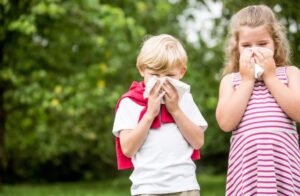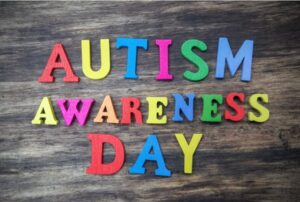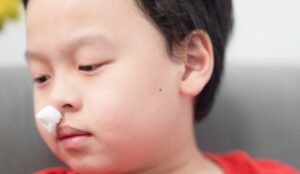As winter approaches, the cold weather often makes children reluctant to go outside and play. For some kids, the cold and dreary weather make staying inside more appealing, leading them to spend hours sitting indoors with electronic devices. Prolonged inactivity can negatively impact children's physical health, and it can also affect their emotional and social development. So, how can we ensure that kids stay active in winter and avoid sitting for long periods due to the cold? This is an important issue for every parent to consider.
Let's take Eason, for example. Eason is a lively 5-year-old boy. As winter sets in, his outdoor activities have significantly decreased, and he's spending more time indoors. Eason’s parents noticed that he became more irritable and less energetic than usual. To address this, they decided to implement a few strategies to keep him active, so he can still enjoy a healthy winter, both physically and emotionally.
1. Utilize Indoor Space for Exercise
While it’s too cold to play outside, there are plenty of ways to keep kids active indoors. Parents can set up simple indoor activities that help children stay fit.
- Jump Rope: Jumping rope is an excellent indoor exercise that helps burn energy while improving coordination and cardiovascular health.
- Yoga or Dancing: Simple yoga moves or dancing can help children develop flexibility and strength while also being fun and relaxing.
- Indoor Obstacle Course: Parents can use household furniture like chairs and sofas to create an obstacle course, encouraging kids to crawl, jump, and climb, increasing their activity levels.
In this way, children can stay active indoors without being exposed to the cold, and they can still improve their strength, agility, and coordination.
2. Enjoy Winter Outdoor Fun
Although it’s cold outside, outdoor activities are still beneficial for children’s physical and mental health. If parents dress their kids warmly and take the right precautions, they can enjoy winter outdoor activities and get some fresh air.
- Skiing or Ice Skating: If there’s a nearby ski resort or ice rink suitable for children, take them to try these winter sports. They not only stay active but also enjoy the winter fun with their family.
- Snow Games: Snow is not only for building snowmen but also for snowball fights, rolling in the snow, and making snow forts. These activities help children exercise while having fun and connecting with nature.
- Walks or Snow Biking: Even in cold weather, short walks or snow biking are great ways to stay active. Just make sure to dress warmly to avoid discomfort from the cold.
3. Set a Routine for Regular Physical Activity
Sometimes, children sit too long simply because they lack a structured routine. Parents can help by setting a daily exercise schedule to ensure that kids stay active even in winter.
- Daily Exercise Time: Set aside 15 to 30 minutes each day for exercise. This doesn’t have to be a long session but should be consistent and part of the daily routine.
- Frequent Breaks: If kids are sitting for an extended period (e.g., while studying or playing), set a timer to remind them to take breaks every 30 minutes or an hour to stretch, walk around, or do some simple exercises.
Having regular exercise routines helps kids stay active and can also improve their immune systems, making them less susceptible to common winter illnesses.
4. Make Activities Fun and Engaging
For young children, physical activity needs to be fun and exciting. If they find it boring, they’re less likely to participate. Parents can make exercise more engaging by being creative.
- Gamify Exercise: For example, parents can play "hide and seek" with their children or engage in role-playing games where kids pretend to be superheroes, animals, or other fun characters. These games can be a form of exercise while keeping kids entertained.
- Friendly Competitions: Parents can turn physical activities into little challenges, like who can jump the highest, run the fastest, or hold a plank the longest. This adds an element of friendly competition and excitement.
- Reward System: To encourage more activity, parents can set up a reward system where kids earn small prizes (such as watching their favorite show or having a treat) for completing exercise tasks.
5. Support with a Healthy Diet
Good nutrition is key to supporting children’s physical activity and overall health. Parents should ensure their kids are eating enough to fuel their energy needs.
- Vitamin D: During the winter, when sunlight exposure is limited, children may not get enough vitamin D. Parents can ensure their kids consume vitamin D-rich foods such as fish, eggs, and dairy products, or provide vitamin D supplements to maintain healthy bones and a strong immune system.
- Adequate Hydration: Kids often forget to drink water when it’s cold outside, but staying hydrated is essential for maintaining energy levels and improving athletic performance. Parents should encourage their children to drink enough water every day.
6. Increase Social Interactions
In winter, kids often spend more time indoors and have fewer opportunities for social interactions. This can lead to feelings of isolation or boredom. Parents can help by organizing activities that allow children to interact with others.
- Organize Playdates: Regular playdates with family or friends can help children maintain social skills and keep them emotionally engaged, which also helps them stay active and happy.
- Group Activities: Parents can invite neighbors or classmates to join in indoor activities or outdoor games, adding a social aspect to physical exercise.
Conclusion
Winter may be cold, but that shouldn’t stop children from staying active. Parents can use various strategies to ensure their children remain engaged in physical activity, whether indoors or outdoors. By making exercise fun, setting up regular routines, and ensuring proper nutrition, kids can maintain their energy levels, strengthen their immune systems, and have a more enjoyable and healthy winter.
References
- American Academy of Pediatrics. (2019). "Physical Activity and Children."
- National Institute of Child Health and Human Development. (2020). "How to Encourage Physical Activity for Children."
- Centers for Disease Control and Prevention. (2021). "How Much Physical Activity Do Children Need?"
- Mayo Clinic. (2022). "Winter Health Tips for Children."













